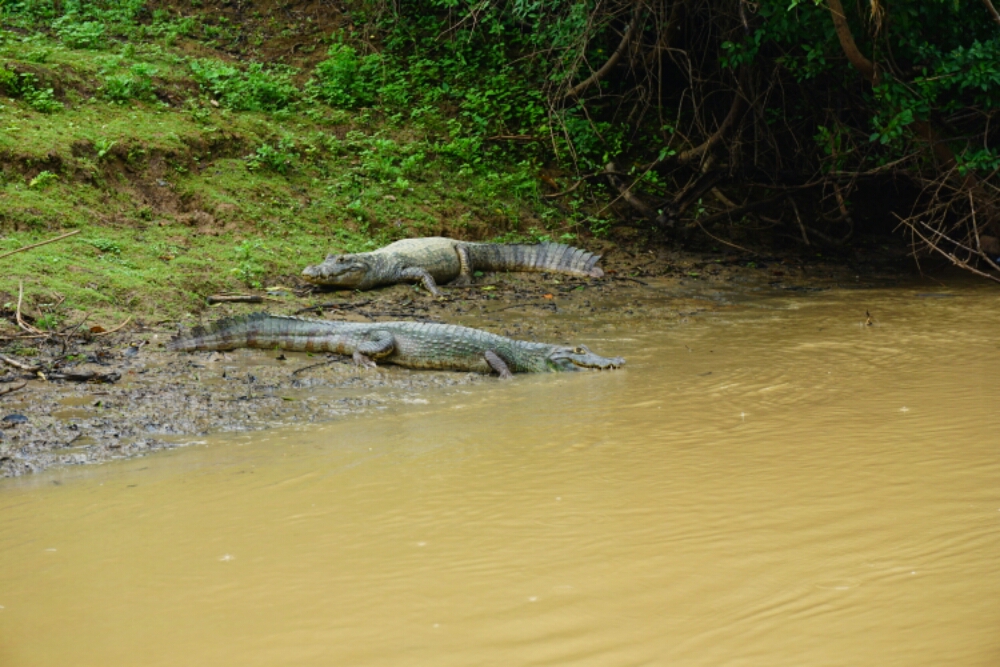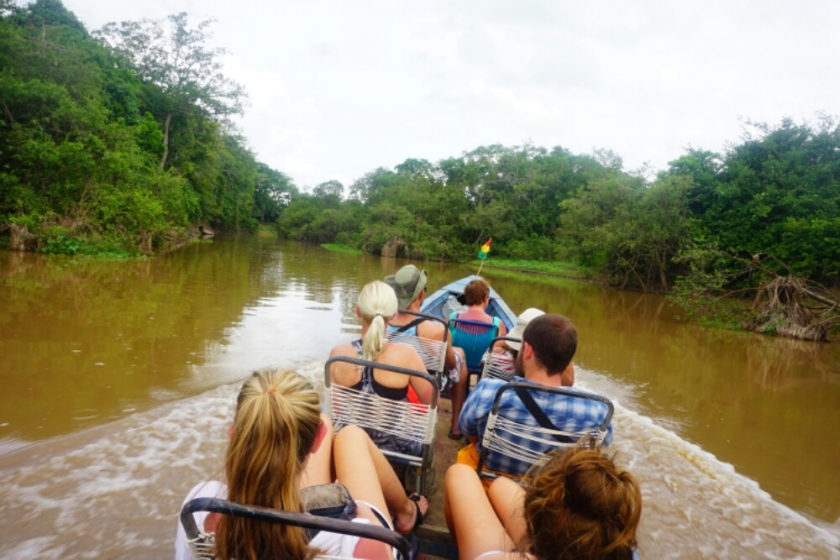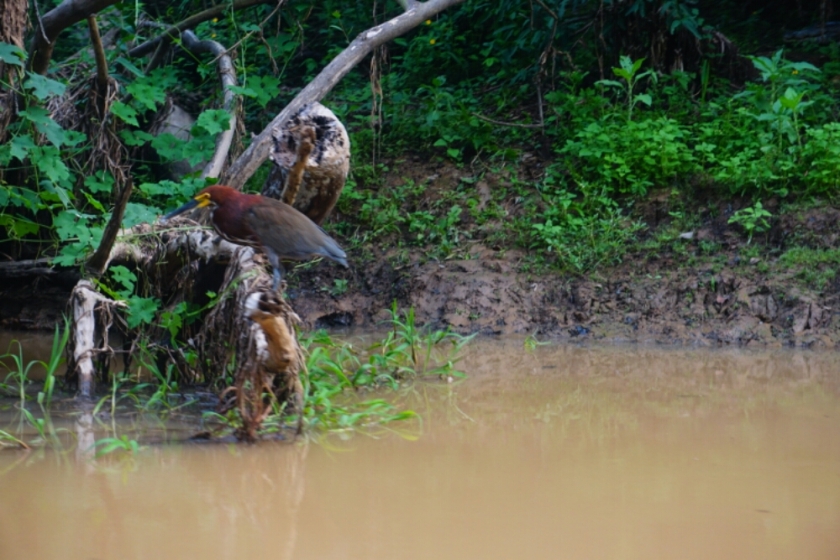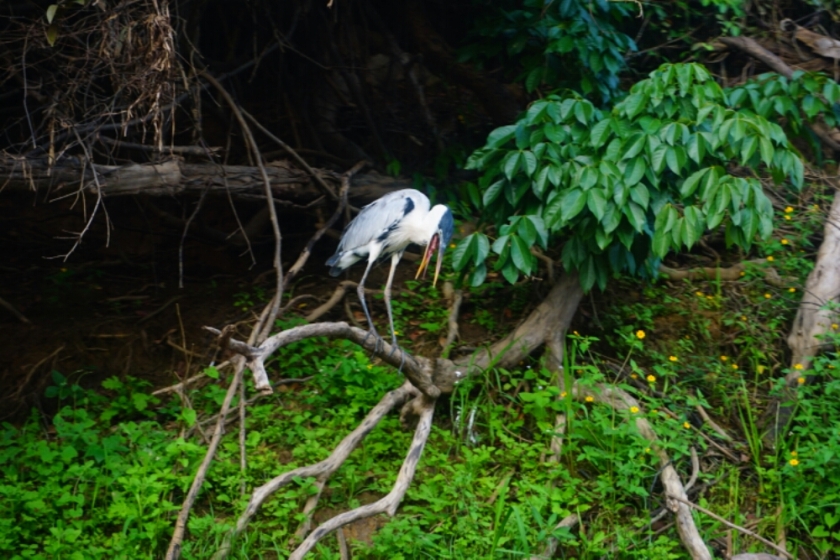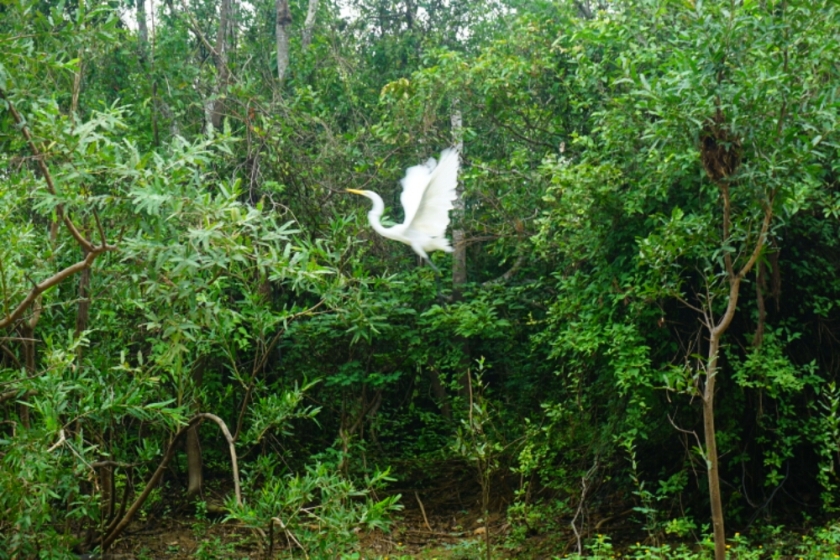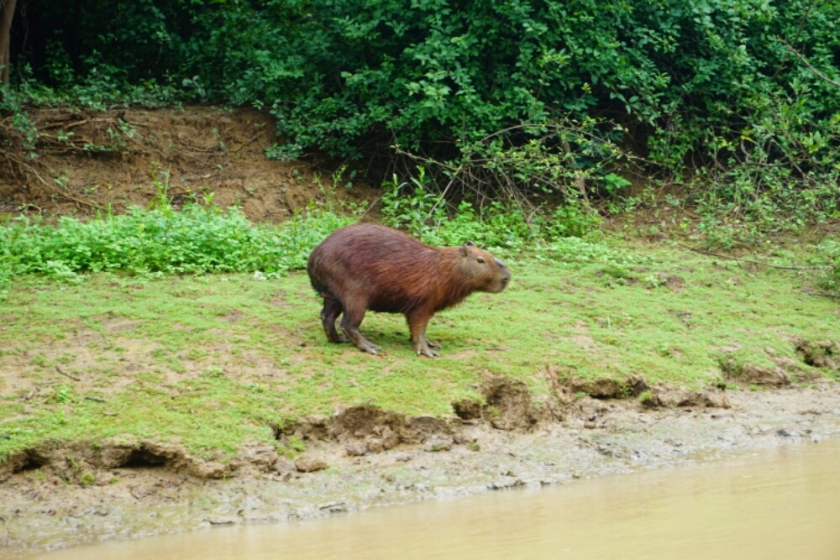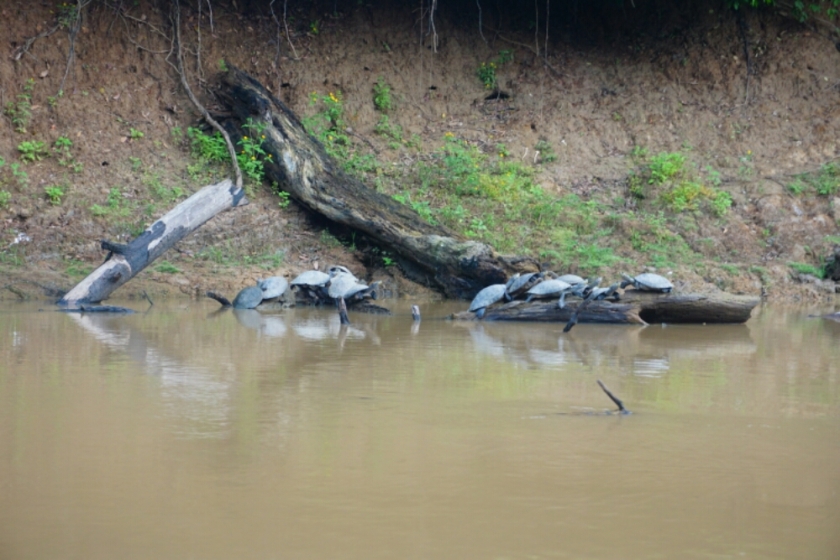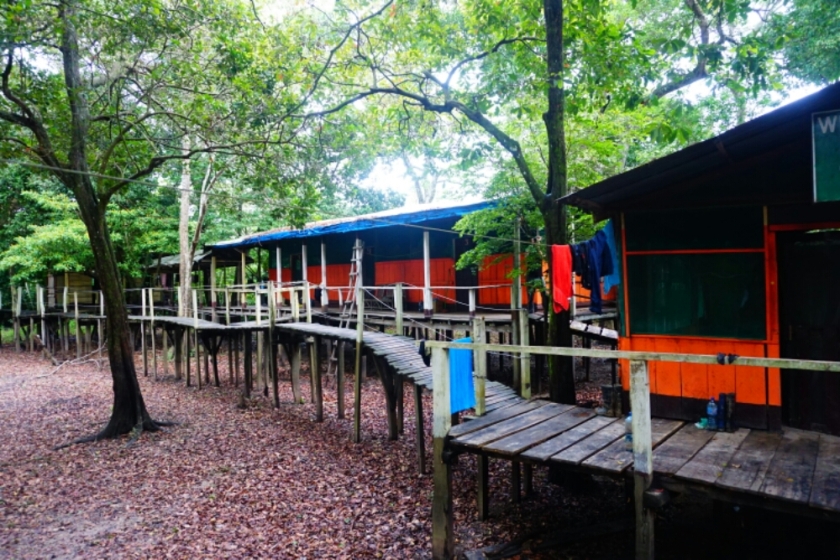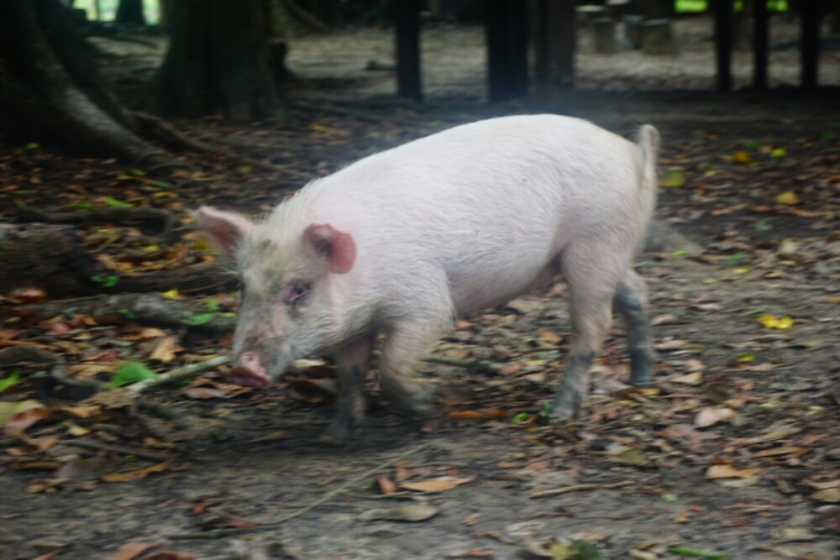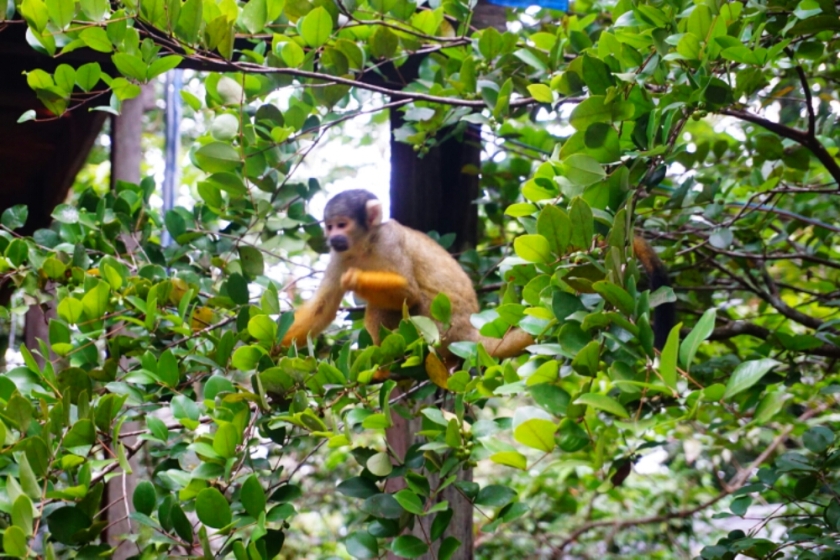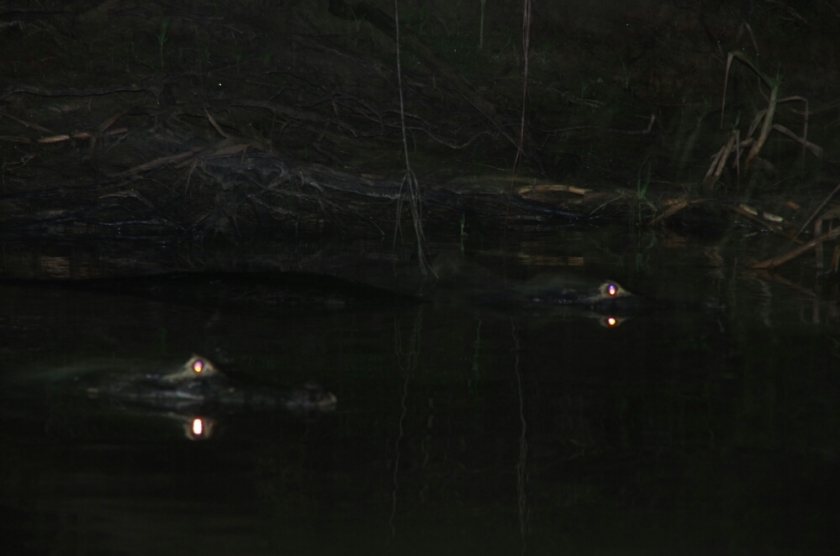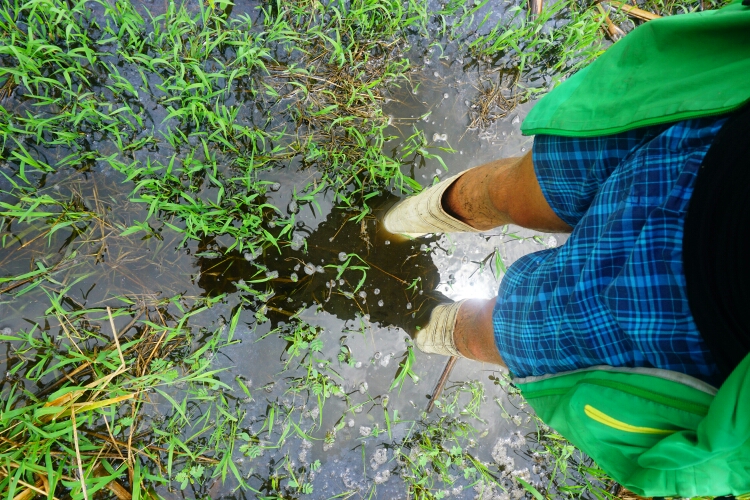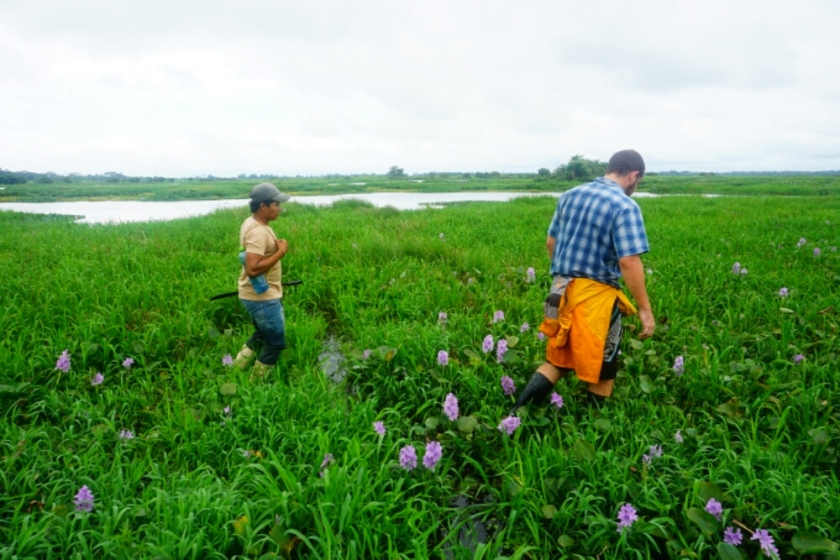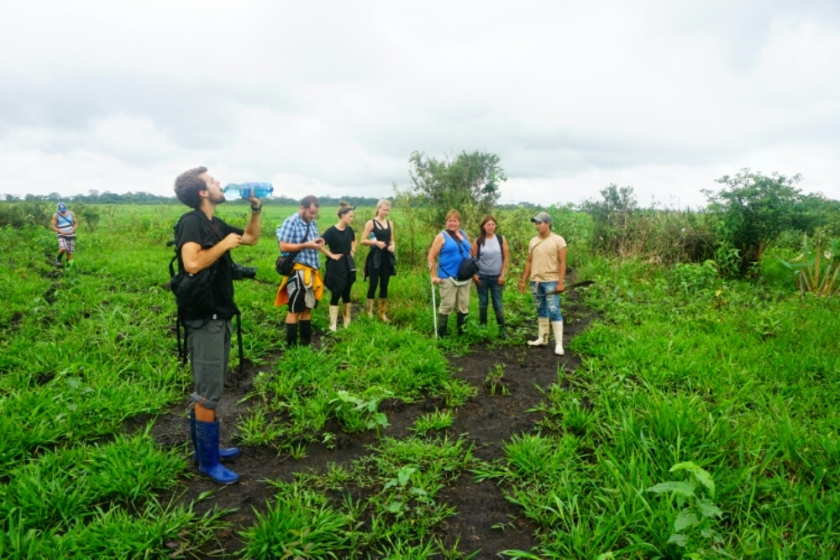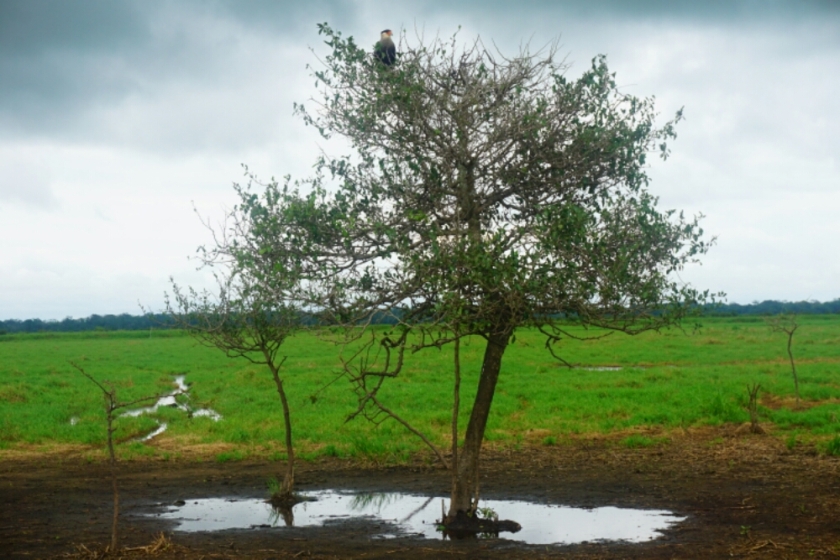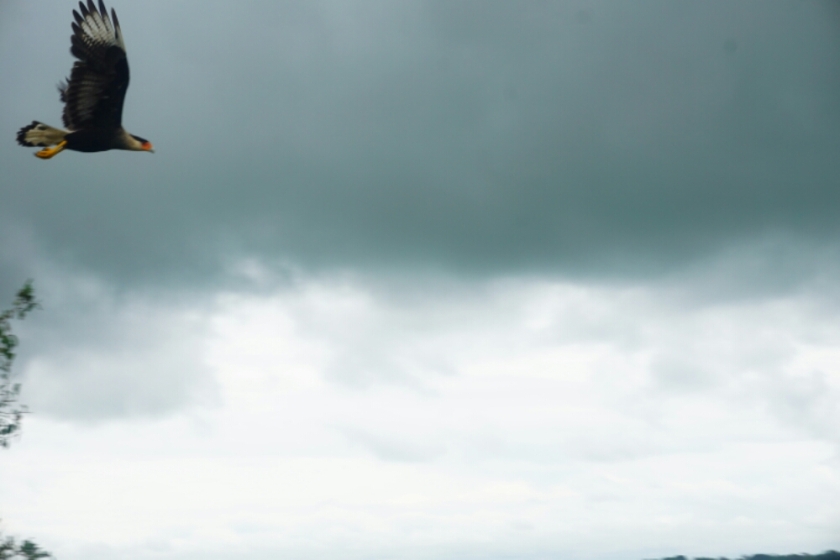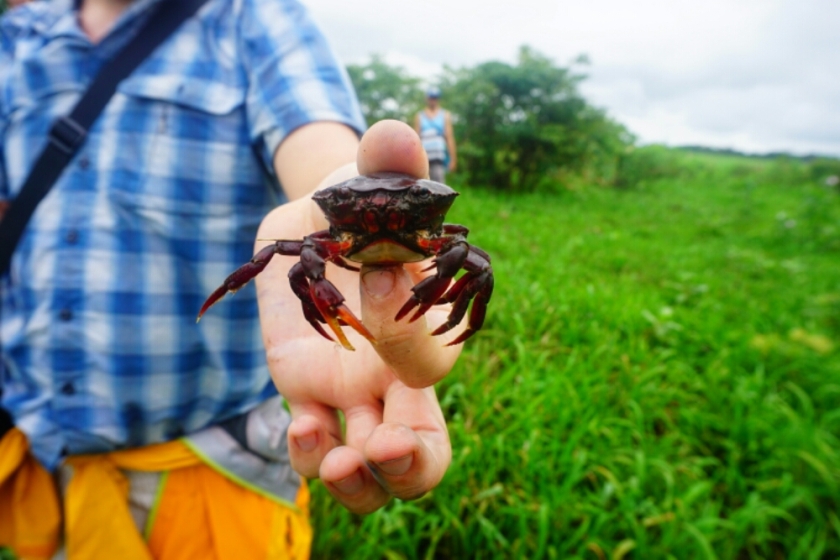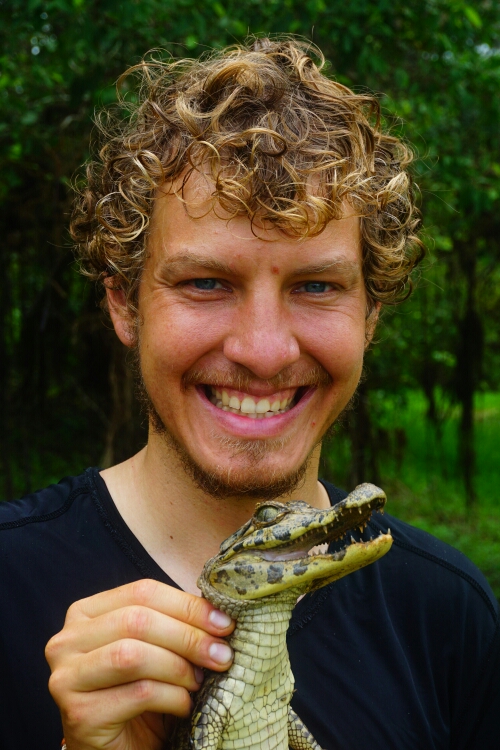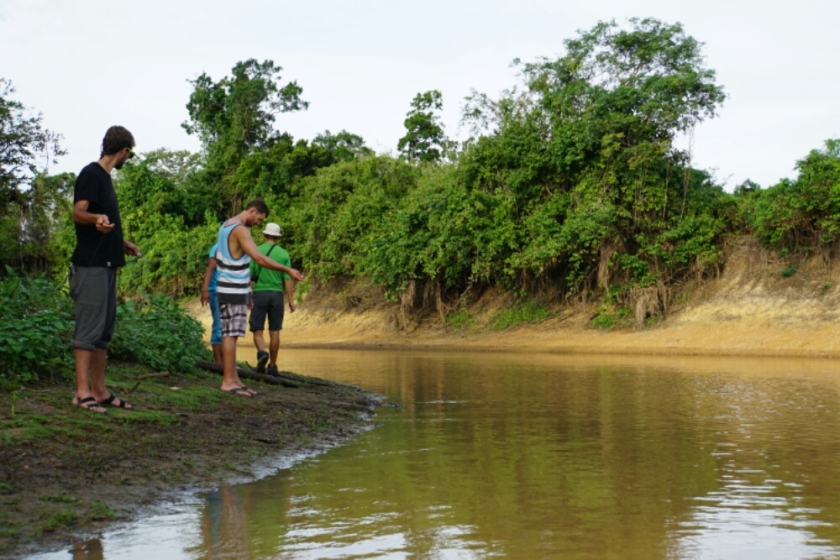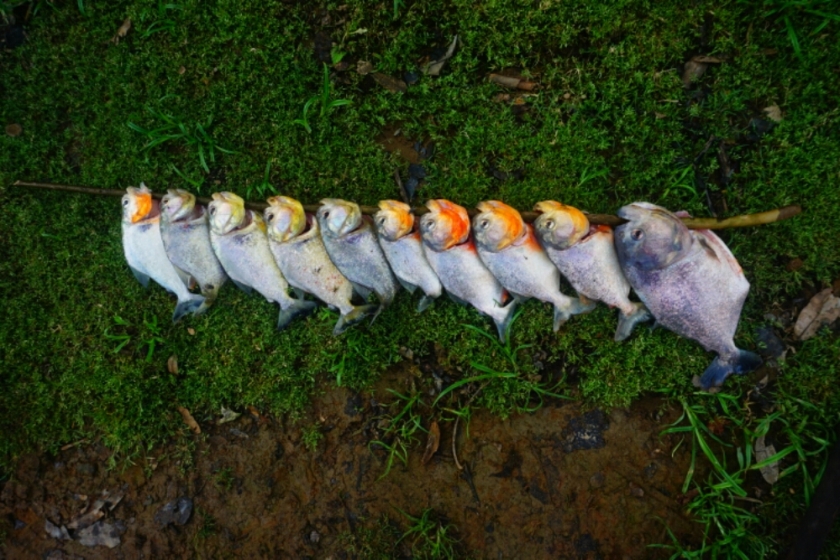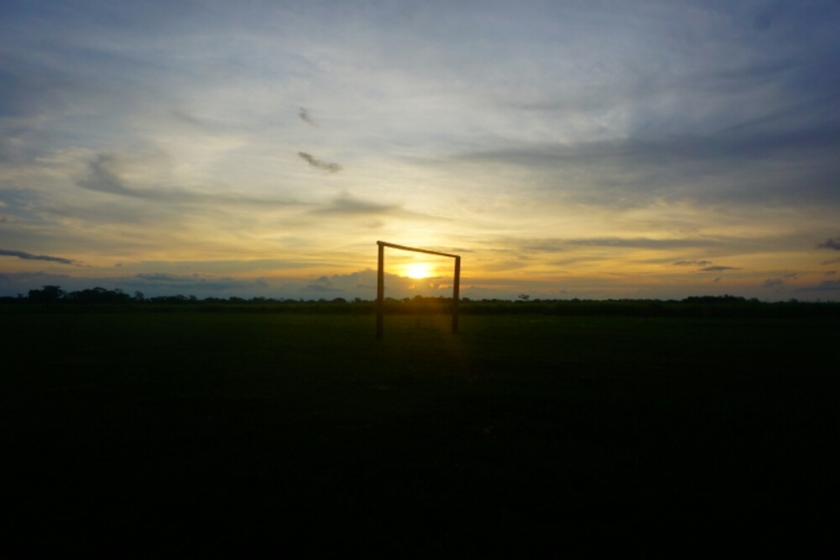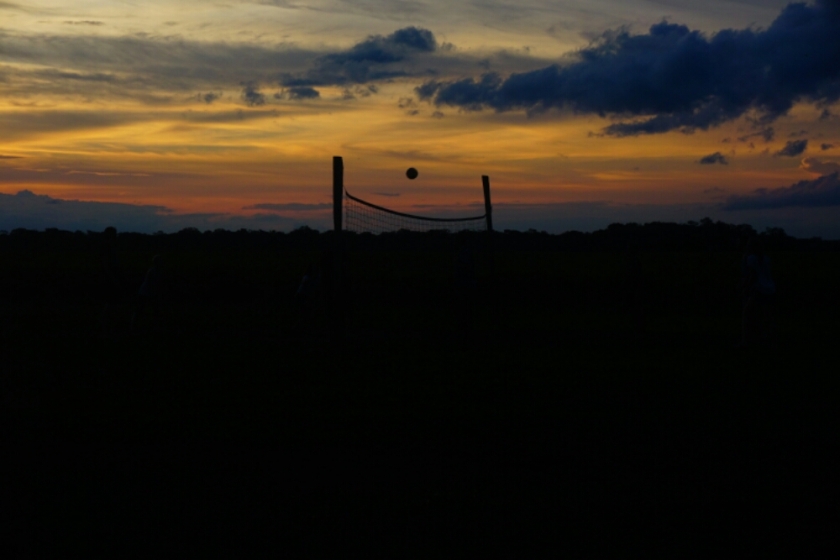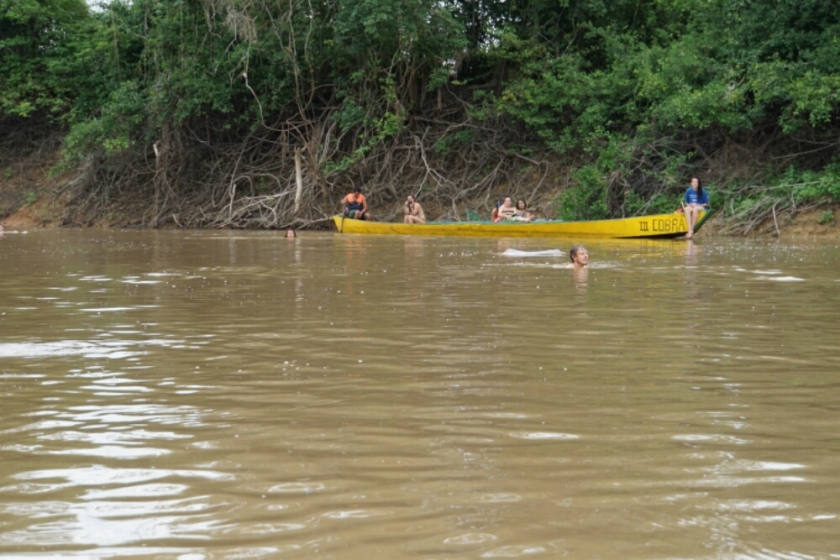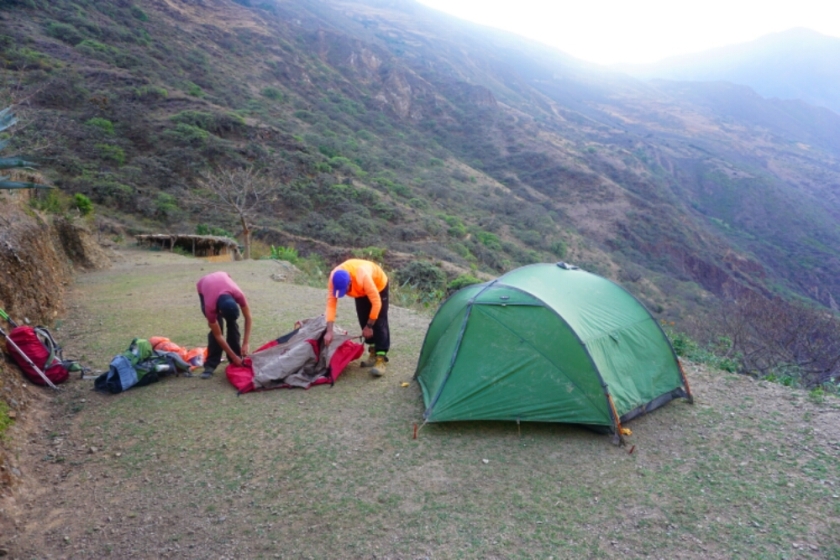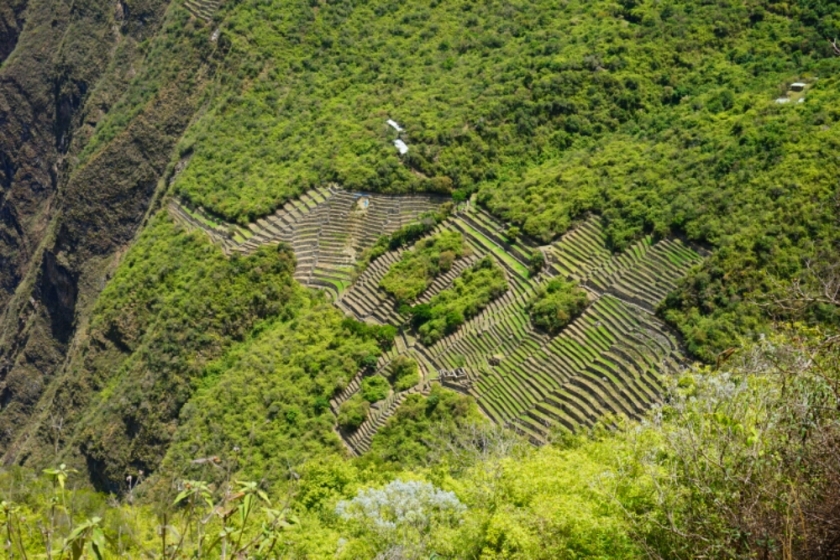I’m surrounded by thousands of little lights in the darkness, some steady at the ceiling, others blinking around me and some seems to be underneath. The visual appearance is accompanied by a cloud of constantly humming noises sometimes drowned by croaking noises. I’m sliding slowly through this atmosphere until… somebody puts on a flashlight and I’m back in reality, back on the river, surrounded by sounding insects, the stars of the sky and the blinking lights of humming birds, whose lights are reflecting in the water.
3 days and two nights we spend in the Pampas, near Santa Rosa, in, on and close to the river Yacuma. After a three hour bus trip we changed into a long boat which was head a powerful motor at the back.
The riversides were full of animals and so we saw heaps of alligators, turtles and huge birds as well as some capibaras and caymans.
We were staying in one of the lodges along the river, where we had further animals to observe, like Luisa, the pig of the house and all the little monkeys, which were frolicing around.
In the first night we entered our long wooden boat again to observe the alligators by night. Their eyes reflected the lights of our torches, so that we could see all the yellow lights all along the river.
Our guide Gary fetched a little baby alligator so that we were able to hold it and feel the texture of the flaky skin.
The next morning we discovered the area next to the river, traversed head-high reed, small rivers with the water up to our knees or swampy pont-water. The idea was to find an anaconda, but although we were trying hard with the help of our experienced guide we couldn’t find one. But still it was an adventure and we saw an eagle and further animals.
Notice the king of the air in the treetop.
Gary pulled another alligator out of the thicket, this time a little bit bigger then the one from the night before.
The afternoon we were in the river again and this time we stopped to fish Piranhas. It was amazing how fast we were able to fish them, not 5 minutes passed as I got the first piranha in my line. But it remained the only one, although it was always able to feel how the fish nibbled on the meat. At the end we had enough for dinner. At the end we found out that they just had a little meat inside, but it was tasting good.
Before going back to our lodge we stopped to see a beautiful sunset over the Pampas.
The last day we were riding on the river again to find a spot where we could swim with the river dolphins and after a few minutes of searching we really found them. They were not that trusting as I thought they would be, but here and there they showed themselves, emerged, dived into the water again and passed us without us noticing it. We were told that they would also protect us from all the alligators and caymans which were also hanging out around us. And also the Piranhas kept away from us.
It was definitely a very good experience to see all the animals and to feel the liveliness of the nature. While this entry gets online, we will be on a boat with our bikes to go to Guanay, traversing the jungle of the national park Madidi.
